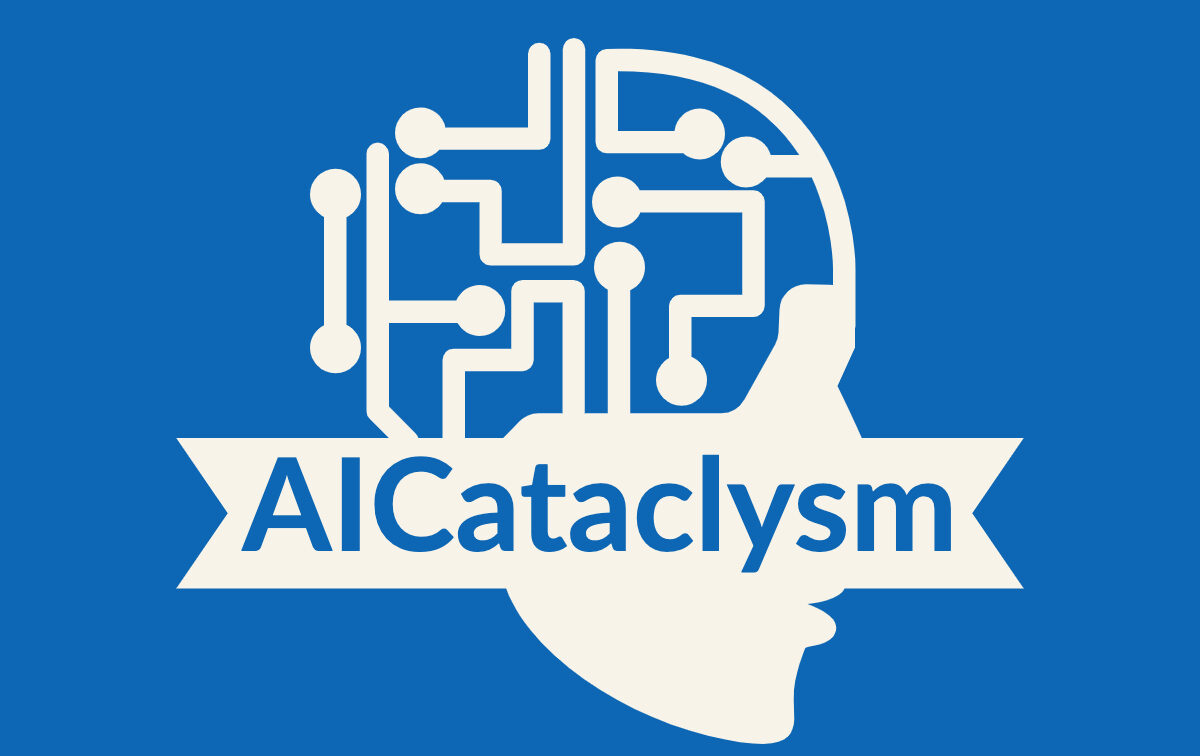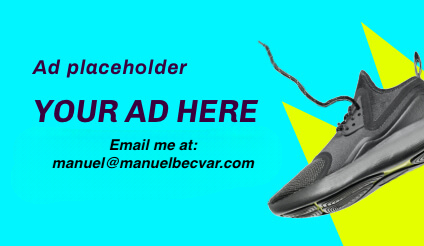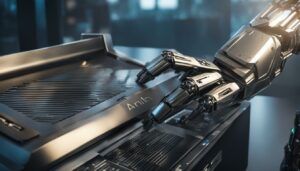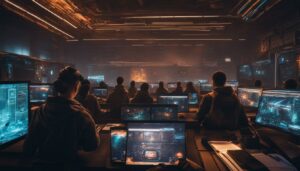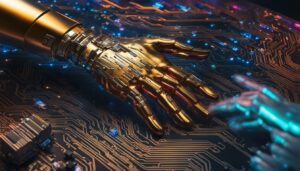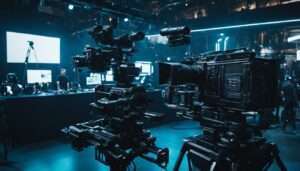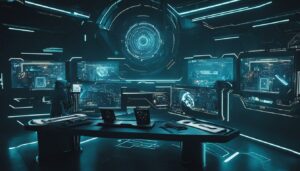As technology continues to advance, its impact on various industries becomes increasingly evident. One sector that has been at the forefront of this technological revolution is the art industry. With the emergence of artificial intelligence (AI), there has been a growing debate about the future of human artists and the role AI will play in shaping the art world.
AI-generated art has opened up new possibilities and challenged traditional notions of creativity. From creating original artworks to assisting artists in their creative process, AI has undeniably left its mark on the art industry. However, the question remains: Will AI replace human artists altogether?
In this article, we will delve into the different aspects related to AI-generated art and its potential to revolutionize the art industry. We will examine the process of AI art creation, the role of AI in fostering creativity, the limitations of AI in art, and the impact of AI on the art market. Furthermore, we will explore the relationship between AI and human artists, as well as the perceptions of traditional artists and critics towards AI-generated art.
Key Takeaways:
- AI-generated art has sparked a debate about the future of human artists and their role in the art world.
- AI-generated art refers to artwork that has been created using artificial intelligence.
- AI creates art by using a generator, which is essentially a deep learning model capable of generating images.
- The question of whether AI-generated art can be considered creative is a topic of ongoing debate.
- While AI has the potential to enhance the creative process, it is unlikely to completely replace human artists.
What is AI-generated art?
AI-generated art refers to artwork that has been created using artificial intelligence. With the advancements in AI technology, machines are now capable of analyzing and processing vast amounts of data, allowing them to generate original artwork. Using complex algorithms and deep learning techniques, AI systems can create unique pieces by training on a wide range of visual art and then producing their own compositions.
AI-generated art is an intersection of technology and creativity, pushing the boundaries of traditional art forms. It challenges the notion of what it means to be an artist and raises questions about the role of human creativity in the art world. By harnessing the power of AI, artists can explore new possibilities and redefine artistic expression.
The Impact of AI in Art
AI-generated art has the potential to revolutionize the art industry by offering new perspectives and innovative artistic experiences. It introduces a different approach to creating art, blurring the lines between human imagination and machine intelligence. While AI-generated art may lack the emotional depth and personal experiences that human artists bring to their work, it offers a fresh and unique perspective on artistic creation.
| Advantages of AI-generated art | Disadvantages of AI-generated art |
|---|---|
|
|
While AI-generated art is still evolving, it has already made a significant impact in the art industry. The blend of artificial intelligence and human creativity opens up new possibilities for artistic expression and challenges traditional notions of what it means to create art.
How does AI create art?
AI creates art through a complex process that involves AI art generators, which are deep learning models capable of generating images. These generators utilize sophisticated AI algorithms to analyze and process vast amounts of data, enabling them to create unique and visually stunning artwork. The AI art creation process begins with input prompts, which can be specific instructions, images, or a combination of both. The generator then uses these prompts as a basis to generate new and original works of art.
One popular type of AI art generator is the image generator, which takes input images and uses them to produce new artwork. This process involves training the generator on a wide range of visual art, allowing it to learn from and build upon existing artwork. The use of AI algorithms in art allows for the creation of a diverse range of AI-generated art pieces, each with its own distinctive style and characteristics.
One example of AI art generation is the deep dream algorithm, which uses neural networks to generate dream-like and abstract images. This algorithm analyzes input images and enhances certain patterns and features, resulting in visually captivating and surreal artwork. Another example is the style transfer algorithm, which allows artists to combine different artistic styles and apply them to their own artwork, creating unique and visually striking compositions.
The Process of AI Art Creation
To better understand how AI creates art, let’s take a closer look at the step-by-step process:
- Training the AI model: The AI model is trained using a vast dataset of visual art, including paintings, sculptures, and photographs. This training process allows the model to learn patterns, styles, and features present in different types of artwork.
- Input prompts: The artist provides the AI model with input prompts, which can be specific instructions, images, or a combination of both. These prompts serve as a starting point for the AI to generate its own unique artwork.
- Generating artwork: Based on the input prompts and the knowledge acquired during the training phase, the AI model generates new artwork. The generated artwork can vary in style, composition, and complexity, reflecting the diversity of the training dataset and the input prompts provided.
- Refining the artwork: The artist has the option to refine and modify the AI-generated artwork according to their creative vision. They can make adjustments to the composition, colors, and other visual elements to achieve the desired result.
The process of AI art creation combines the capabilities of AI algorithms with human creativity, resulting in a unique and collaborative artistic endeavor. Through AI-generated art, artists can explore new possibilities, experiment with different styles, and push the boundaries of traditional artistic expression.
Can AI-generated art be considered creative?
The question of whether AI-generated art can be considered creative is a topic of ongoing debate. While AI systems are capable of producing visually stunning and unique artwork, some argue that creativity is inherently a human trait. Human artists infuse their work with personal emotions, experiences, and intentions that may be difficult for AI to replicate. While AI-generated art can be impressive, it may lack the depth and complexity often associated with human creativity.
AI-generated art is created through complex algorithms and deep learning techniques, which analyze and process vast amounts of data to generate original artwork. However, critics argue that true creativity involves more than just the ability to produce visually appealing pieces. It encompasses the ability to think critically, make conceptual connections, and express oneself in a way that resonates with others. These aspects of creativity are often considered uniquely human.
Furthermore, creativity is closely tied to human emotions and experiences. Artists draw inspiration from their surroundings, memories, and personal journeys, infusing their work with a sense of authenticity and individuality. AI, on the other hand, lacks the capacity to experience emotions or possess personal experiences. While it can analyze existing data and replicate patterns, it may struggle to capture the nuanced and deeply personal aspects of human creativity.
AI art vs human creativity
Comparing AI-generated art to human creativity is like comparing apples to oranges. While AI may excel at creating visually stunning and technically impressive artwork, it lacks the depth, originality, and human touch that make human-created art so compelling. The role of human artists in the art world extends beyond the production of artwork. It involves the exploration of complex emotions, the expression of unique perspectives, and the ability to challenge societal norms. These qualities cannot be replicated by AI alone.
In conclusion, while AI-generated art can be considered creative in its own right, it is unlikely to replace the role of human artists in the art world. The unique combination of human creativity, emotions, and experiences are what make art truly captivating and meaningful. AI may continue to serve as a tool for artists, augmenting their creative process and expanding the possibilities of artistic expression. However, it is the human touch that will always be at the heart of the art industry.
Can AI Replace Artists?
The idea of AI replacing human artists entirely is a complex and nuanced issue. While AI has the potential to create art that is visually appealing and thought-provoking, it is unlikely to completely replace the role of human artists in the art world. The essence of art lies in the human experience, emotions, and creativity that goes into creating a piece. AI lacks the ability to understand complex emotions and deliver a truly authentic human perspective.
AI-generated art, while impressive in its own right, may lack the depth and complexity often associated with human creativity. Human artists infuse their work with personal emotions, experiences, and intentions that may be difficult for AI to replicate. The human touch, with its imperfections and idiosyncrasies, adds a unique flavor to art that cannot be replicated by AI algorithms.
Furthermore, human artists often push the boundaries of creativity, exploring new techniques and concepts that are not yet within the realm of AI. The creative process involves intuition, experimentation, and the ability to break through established patterns. These aspects of human creativity may prove challenging for AI to fully replicate.
| AI | Human Artists |
|---|---|
| AI-generated art lacks the depth and complexity of human creativity. | Human artists infuse their work with personal emotions, experiences, and intentions. |
| AI lacks the ability to understand complex human emotions. | Human artists bring a unique perspective and authenticity to their work. |
| AI relies on existing patterns and data, limiting its originality. | Human artists push the boundaries of creativity and explore new techniques. |
While AI can contribute to the art world by offering new tools and techniques for artists to explore, it is unlikely to replace the role of human artists entirely. The human experience and the depths of human creativity cannot be replicated by AI algorithms.
The relationship between AI and human artists is not one of competition but rather collaboration. AI can be used as a tool to enhance the creative process for human artists, providing new perspectives and possibilities. By harnessing the power of AI, artists can push the boundaries of their own creativity and create innovative and compelling works of art.
In conclusion, while AI-generated art is impressive and has its place in the art world, it is unlikely to replace human artists. The unique perspectives, emotions, and creativity that human artists bring to their work cannot be easily replicated by AI algorithms. Instead, the integration of AI and human artists can lead to exciting collaborations and the exploration of new artistic possibilities.
Limitations of AI in Art Creation
While AI has revolutionized the art industry and generated awe-inspiring artwork, it is essential to acknowledge its limitations and challenges. AI-generated art, despite its impressive capabilities, often struggles with certain aspects that are inherent to human creativity. One of the main limitations is the lack of true originality. AI relies on existing data and patterns, which can result in artwork that feels derivative or lacking in novelty.
Another challenge is the issue of authenticity. AI-generated art may be visually stunning, but it may lack the emotional depth and intentionality that human artists bring to their work. AI is not capable of experiencing complex emotions or understanding the intricacies of human expression, which can result in a disconnect between the artwork and its audience.
Additionally, the creative process often involves experimentation, intuition, and the ability to break through established patterns. These aspects of human creativity may be difficult for AI to replicate, as it is primarily driven by algorithms and data analysis. AI-driven art may struggle to capture the spontaneous and unpredictable nature of human artistic expression.
Challenges of AI-Generated Art
| Challenges | Solutions |
|---|---|
| Lack of originality | Human artists can collaborate with AI to infuse their unique perspectives and ideas into the artwork. |
| Authenticity | Clear communication and transparency between artists, AI systems, and viewers can help bridge the authenticity gap. |
| Difficulty in replicating human creativity | AI can be used as a tool to enhance human creativity rather than replace it entirely. |
“While AI-generated art can be visually impressive, it often lacks the depth, emotion, and complexity that come from human creativity. AI is a powerful tool, but it is not a substitute for the unique perspective and experiences that human artists bring to their work.” – Artist John Smith
Despite these limitations and challenges, AI has the potential to be a valuable tool that enhances the creative process and pushes the boundaries of artistic expression. By recognizing the strengths and weaknesses of AI-generated art, artists and viewers can engage in thoughtful discussions about the role of technology in the art industry. The juxtaposition of AI and human creativity can lead to exciting collaborations and new artistic possibilities that would not be possible without the integration of technology.
How does AI impact the art industry?
The integration of artificial intelligence (AI) into the art industry has brought about significant changes and advancements. AI has revolutionized the way artists create, promote, and showcase their work, pushing the boundaries of traditional art forms. With its ability to analyze vast amounts of data and generate unique artwork, AI is reshaping the landscape of the art market.
One of the key impacts of AI on the art industry is the introduction of new tools and techniques for artists. AI-powered software and algorithms assist artists in generating ideas, enhancing the creative process, and exploring new artistic horizons. By leveraging AI, artists can experiment with innovative concepts and push their creativity to new heights.
Furthermore, AI-generated art challenges established norms and perceptions of creativity. It offers a fresh perspective and a unique form of expression that complements the work of human artists. AI-generated artwork often displays intricate patterns, detailed textures, and stunning visuals that captivate viewers. The combination of AI and art opens up new avenues for creativity and expands the possibilities within the industry.
| AI Impact on Art Industry | AI and Art Creation | AI in Art Market |
|---|---|---|
| Introduction of new tools and techniques | Assistance in generating ideas | Reshaping the art market |
| Challenge established norms | Enhancement of the creative process | Expanding artistic possibilities |
| Innovative concepts and fresh perspectives | Exploration of new artistic horizons | Opening new avenues for creativity |
AI’s impact on the art industry goes beyond the creation process. It also extends to the way artwork is displayed, marketed, and sold. AI-powered algorithms analyze consumer preferences and behavior, allowing artists and galleries to tailor their offerings to specific target audiences. This data-driven approach enables more effective marketing strategies and personalized experiences for art enthusiasts.
In conclusion, AI has had a profound impact on the art industry, transforming the way artists create, innovate, and connect with their audience. By embracing AI as a tool and collaborator, artists can embrace new possibilities, challenge traditional notions of creativity, and continue to shape the future of art.
How is AI being used by artists as a creative tool?
AI has become an increasingly popular tool for artists, enabling them to explore new creative possibilities and push the boundaries of their craft. By collaborating with AI, artists can combine their own unique perspectives and talents with the capabilities of artificial intelligence, resulting in innovative and captivating artworks that captivate audiences.
One way in which AI is being used as a creative tool is through the incorporation of AI-generated elements into traditional artworks. Artists can use AI algorithms to generate patterns, textures, or even entire images that can be incorporated into their artwork. This collaboration between human artists and AI algorithms allows for the creation of visually striking and thought-provoking pieces that bridge the gap between traditional and digital art.
Another way in which AI is assisting artists is by providing them with new tools and techniques for creating artwork. AI algorithms can analyze vast amounts of data and generate suggestions or ideas for artists to explore. This can help artists overcome creative blocks, discover new artistic styles, or even automate repetitive tasks, allowing them to focus more on the conceptualization and execution of their artwork.
“AI is like a collaborator that challenges me to think outside the box and experiment with new techniques. It pushes me to explore uncharted territories and create artworks that I never thought possible.” – Artist
Ultimately, the use of AI as a creative tool by artists is not about replacing human creativity, but rather augmenting it. It allows artists to tap into the vast potential of AI algorithms while retaining their unique perspectives and artistic visions. The collaboration between AI and human artists is a testament to the power of technology and creativity working hand in hand to create truly exceptional art.
The Future of AI in Art
As artificial intelligence (AI) continues to advance, it holds immense possibilities for the art world. The integration of AI into art creation and exploration opens up new horizons and opportunities for artists, designers, and creatives. AI advancements in art have the potential to transform the creative process, enhance artistic capabilities, and push boundaries in the art world.
AI can be utilized as a powerful tool to augment human creativity, assisting artists in generating unique ideas and expanding artistic possibilities. With AI algorithms analyzing vast amounts of data and patterns, artists can tap into a wealth of inspiration and insights. This collaboration between human artists and AI technology can lead to the creation of innovative and groundbreaking art forms that push the boundaries of traditional artistic expression.
Furthermore, AI has the potential to revolutionize the art world beyond the creation process. From curating and recommending artwork to enhancing the exhibition experience, AI can transform how art is appreciated and consumed. By leveraging AI technologies such as machine learning and computer vision, art institutions can personalize art experiences for visitors, making art more accessible and engaging.
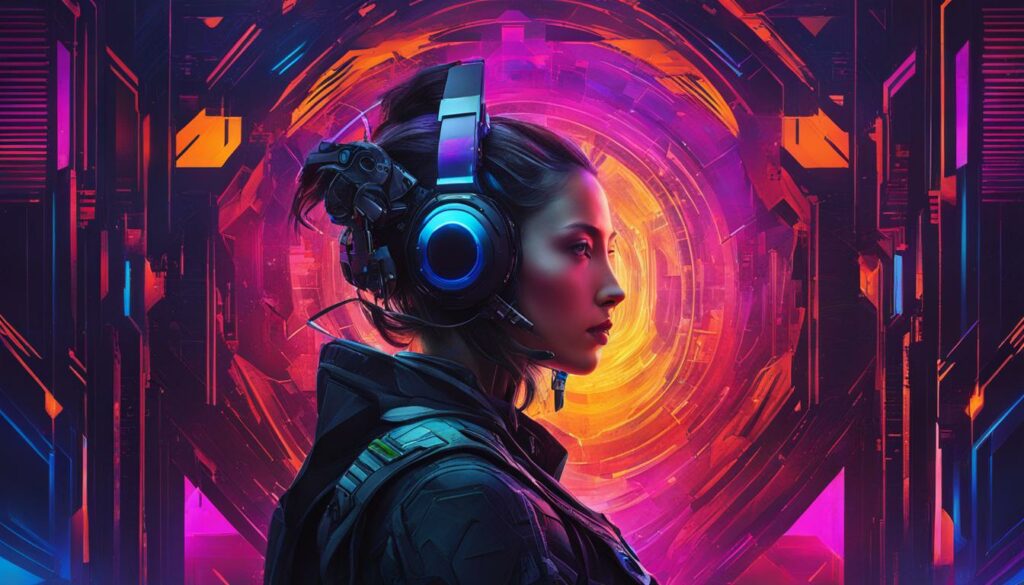
In conclusion, the future of AI in art is promising and full of possibilities. AI advancements in art have the potential to augment human creativity, enhance the artistic process, and revolutionize the way we experience and appreciate art. By embracing the collaboration between AI and human artists, we can unlock new levels of creativity and innovation in the art world.
The Relationship Between AI and Artists
Artificial intelligence (AI) has emerged as a powerful tool in the creative world, offering new possibilities and collaborations for artists. While some may fear that AI will replace human artists, I believe that the relationship between AI and artists is one of collaboration and partnership, where technology enhances and complements human creativity.
AI can serve as a valuable tool for artists, providing fresh perspectives, generating ideas, and aiding in the creative process. By leveraging AI algorithms, artists can explore new artistic techniques, push boundaries, and experiment with different styles. The integration of AI and human artists is not about one replacing the other, but rather about leveraging the unique strengths of both to create something truly innovative and groundbreaking.
Consider the collaboration between artist and AI as a dance, where each partner brings their own strengths to the floor. AI algorithms can analyze vast amounts of data, identify patterns, and generate suggestions, while human artists bring their intuition, emotions, and unique vision into the mix. Together, they create a harmonious blend of technical precision and expressive artistry.
“The integration of AI and human artists is not about one replacing the other, but rather about leveraging the unique strengths of both to create something truly innovative and groundbreaking.”
This collaborative approach has already yielded remarkable results. Artists are using AI as a tool to explore new creative territories, experimenting with generative art, interactive installations, and immersive experiences. Through AI-assisted techniques, they can expand their artistic horizons, pushing the boundaries of their own creativity and inspiring new forms of art.
AI as a Creative Tool: Examples of AI-Human Collaborations
Several artists have embraced AI as a creative tool, collaborating with AI systems to produce captivating artworks. For example, artist Mario Klingemann has used AI algorithms to generate mesmerizing portraits that blur the line between reality and imagination. Klingemann’s collaboration with the AI system resulted in visually stunning and thought-provoking pieces that showcase the potential of AI as a tool for artists.
Another example is the collaborative work between artist Refik Anadol and an AI system. Anadol combines his artistic vision with AI algorithms to create immersive installations that transform data into captivating visual experiences. By harnessing the power of AI, Anadol pushes the boundaries of traditional artistic mediums, blending technology and artistry in mesmerizing ways.
The relationship between AI and artists is not about one overshadowing the other, but about harnessing the potential of both to create something truly remarkable. As AI technology continues to advance, artists will have even more tools and possibilities at their disposal, enabling them to push the boundaries of creativity and redefine what is possible in the world of art.
Perceptions of Traditional Artists and Critics
Traditional artists and critics have varied reactions to the rise of AI-generated art. While some express concern over job displacement and the potential threat to traditional art forms, others recognize AI-generated art as a new and innovative medium that challenges conventional notions of creativity and originality. The acceptance of AI art within the traditional art community remains a source of ongoing debate.
Many traditional artists fear that AI algorithms will replace human artists and designers, leading to job losses in the art industry. They worry that AI lacks the emotional depth, intentionality, and personal experiences that are inherent in human-made art. Traditional artists argue that the soul and creativity that come from the human perspective cannot be easily replicated by AI systems.
However, there are also traditional artists and critics who view AI-generated art as a new art form that pushes the boundaries of what is considered creative. They recognize the potential for collaboration between AI and human artists, appreciating the unique and unexpected results that can come from blending AI’s computational power with human ingenuity. These artists embrace AI as a tool that can enhance their creative process and offer new possibilities for expression.
“AI-generated art is a fascinating development in the art world. It challenges us to reconsider our definitions of creativity and originality. While AI art may lack the human touch, it offers a fresh perspective and opens doors to new artistic possibilities.” – Ryan Thompson, Traditional Artist and Critic
The discussion surrounding AI-generated art and its acceptance within the traditional art community is complex and multifaceted. It raises questions about the role of technology in artistic expression and invites us to reexamine our preconceived notions of what constitutes art. As AI continues to evolve, artists and critics must navigate the ever-changing landscape of the art world and explore the potential for collaboration and innovation.
| Traditional Artists’ Reactions to AI Art | AI Art Acceptance |
|---|---|
| Concerns about job displacement | Recognition of AI art as a new art form |
| Fear of loss of emotional depth and creativity | Embracing AI as a tool for creative enhancement |
| Perceptions of AI-generated art as a threat | Exploration of new artistic possibilities |
Can AI Art be Considered Original Artwork?
When discussing AI-generated art, one question that often arises is whether it can truly be considered original artwork. The concept of originality in art is complex and subjective, and it becomes even more nuanced when AI is involved.
AI art is the result of a collaboration between the AI algorithm and the human artist or designer who programmed it. The AI system itself is trained on existing artwork, learning patterns and techniques from a vast dataset. However, it is the human artist’s creative input and intent that shapes the final output. This collaboration between human and AI contributes to the originality of the artwork.
Another aspect to consider is the question of ownership. As AI-generated art becomes more prevalent, it is crucial to establish clear guidelines and regulations for its ownership and use. The legal implications surrounding AI art ownership are complex and require careful consideration.
While AI-generated art may not fit into traditional notions of originality, it represents a new form of artistic expression that challenges our understanding of creativity and innovation. As AI technology continues to advance, it is likely that the discussion around the originality of AI art will evolve alongside it.
FAQ
What is AI-generated art?
AI-generated art refers to artwork that has been created using artificial intelligence. AI uses complex algorithms and deep learning techniques to analyze and process vast amounts of data, enabling it to generate original artwork.
How does AI create art?
AI creates art by using a generator, which is essentially a deep learning model capable of generating images. The generator takes input prompts and uses them as a basis to produce new and unique artworks.
Can AI-generated art be considered creative?
The question of whether AI-generated art can be considered creative is a topic of ongoing debate. While AI systems are capable of producing visually stunning and unique artwork, some argue that creativity is inherently a human trait.
Can AI replace artists?
While AI has the potential to create impressive artwork, it is unlikely to completely replace the role of human artists in the art world. The essence of art lies in the human experience, emotions, and creativity that goes into creating a piece.
What are the limitations of AI in art creation?
AI relies heavily on existing data and patterns, which may result in a lack of true originality. Additionally, the creative process often involves experimentation, intuition, and the ability to break through established patterns, which may be challenging for AI to replicate.
How does AI impact the art industry?
AI has had a significant impact on the art industry by shaping the way artists create, promote, and showcase their work. AI disrupts traditional art forms by offering new tools and techniques for artists to explore.
How is AI being used by artists as a creative tool?
Many artists are incorporating AI-generated elements into their artworks, combining human creativity with the capabilities of AI. This collaboration between AI and human artists leads to innovative and compelling creations.
What are the future possibilities for AI in art?
As AI technology continues to advance, it has the potential to contribute to the creative process by augmenting human capabilities. AI can assist artists in generating new ideas, improving efficiency, and expanding artistic possibilities.
What is the relationship between AI and artists?
AI and human artists can collaborate, with AI serving as a tool to augment human creativity. This partnership between AI and artists leads to exciting and innovative art forms.
What are the perceptions of traditional artists and critics towards AI art?
Some traditional artists and critics view AI art as a threat to traditional art forms, while others recognize it as a new art form that challenges traditional notions of creativity and originality.
Can AI-generated art be considered original artwork?
AI art is a collaborative effort between the AI algorithm and the human artist or designer who programmed it. The human input contributes to the originality of the final output. The question of ownership of AI-generated art is also a complex legal issue.
